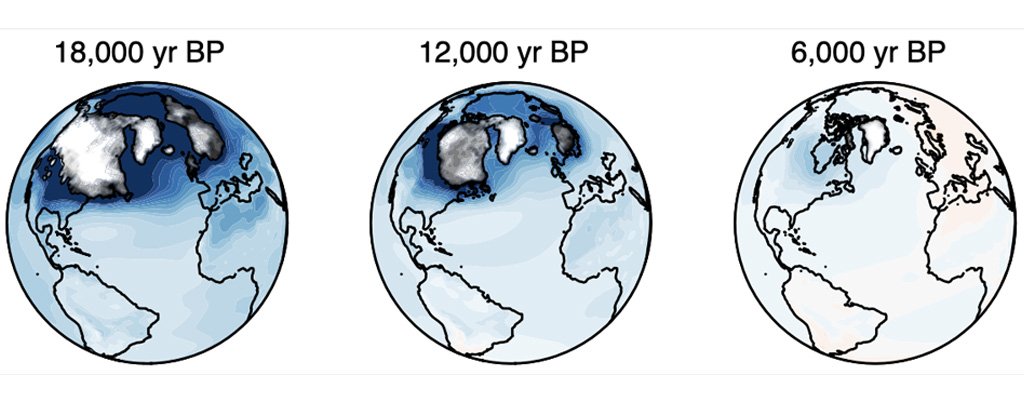
According to a new study, the world is warming at an "extraordinary", unprecedented rate. This is according to hundreds of temperature records taken from all over the globe in order to map past climate change.
The study uses marine sediments to reconstruct past temperatures back to the peak in the last ice age. It confirms that humans have caused a shift of climate in Earth's history not previously documented in the geological records.
"This reconstruction suggests the unprecedented temperature rises in the last 24,000 years and suggests that human-caused global warming has been occurring at a faster pace than any other time in the past," said Jessica Tierney, a University of Arizona paleoclimatologist and co-author of this study.
These findings are in line with the UN's Intergovernmental Panel on Climate Change's (IPCC) latest report, released in August. It concluded that fossil fuel burning has caused the planet to heat at a rate that is unprecedented in the past 2000 years. This means that humans have an "unambiguous" impact on the climate.
Matthew Osman (University of Arizona) is the lead author of the paper. He says that the fact that we are so far from normal today is alarming.
Tierney, Osman, and their colleagues analysed a remarkable 539 paleoclimate data records dating back at most 4,000 years and collectively covering the past 24,000 year. This includes the Last Glacial Maximum, when huge ice sheets covered most the Northern Hemisphere.
The researchers looked at the geochemical signatures of marine sediments taken from coasts and seafloors across the globe. They used this proxy data to update climate models that are getting increasingly sophisticated, but still require data inputs.
To reconstruct the global temperature over millennia, past attempts have focused on very short time windows to capture regional variability or looked at averaged temperature changes across the globe to see a larger picture of how Earth's climate has changed.
"The advantage of this [new] hybrid approach to modeling is that proxy data bring it closer to reality and the model fills gaps where there are no data," Shaun Marcott of University of Wisconsin-Madison, and Jeremy Shakun of Boston College explain in a commentary on the study.
The study shows that temperature graphs showing sharp increases in global temperature over the past 150 years, unlike any we have seen before, are an abrupt departure from the earlier, gradual warming.
Marcott and Shakun conclude that the results "imply modern heating is extraordinary in comparison with that of past 10,000 years."
The global average surface temperature since last ice age (Osman, et al.
The study authors also write that mapping the global temperature changes over 200 years as the ice sheets receded and the greenhouse gases rose provided a better "complete view" of climate change over the past 24,000+ years.
It should not surprise that their analysis revealed that increasing levels of greenhouse gasses and retreating vast ice sheet are the main drivers of climate changes since the last Ice Age. However, their maps of global temperature rise do provide a new perspective.
Osman states that "with them, it's possible to explore how temperatures changed across Earth on a very personal basis." Below you will see that the colder temperatures are associated with the darker shades of blue.
Maps of global surface temperature over 24,000 years (Osman and al. 2021).
Osman says that being able to see the 24,000 year evolution of temperatures at the exact spot I sit today or where I grew old really helped instill a sense of how serious climate change is.
The Pacific Islanders, who already feel the effects of climate change, don't need such maps to see what's at stake and how their homelands are changing.
It is worth noting that the study has some technical limitations. One climate model was used, which isn't ideal. Also, no terrestrial data was included. Only marine records were included. Very few data are sourced from the Southern, Indian, or Central Pacific oceans.
The new study supports previous estimates of global temperature changes based on smaller data sets. Marcott and Shakun say that the patterns of global warming through time across both the globe and in each hemisphere are very similar.
Tierney said that the team is now considering applying their approach to ancient climates warmer than current. "These times are windows into our future, as greenhouse gas emissions increase."
Climate scientists continue to stress that the future climate is still uncertain. Each degree of heat is important in our efforts to reduce carbon emissions and avoid the worst effects of climate change.
Valerie Masson Delmotte, climatologist, told Nature that the climate we experience in the future is dependent on how we make decisions now. She spoke to Nature in August after presenting the sixth IPCC Report.
There is no time to waste.
Nature published the study.
